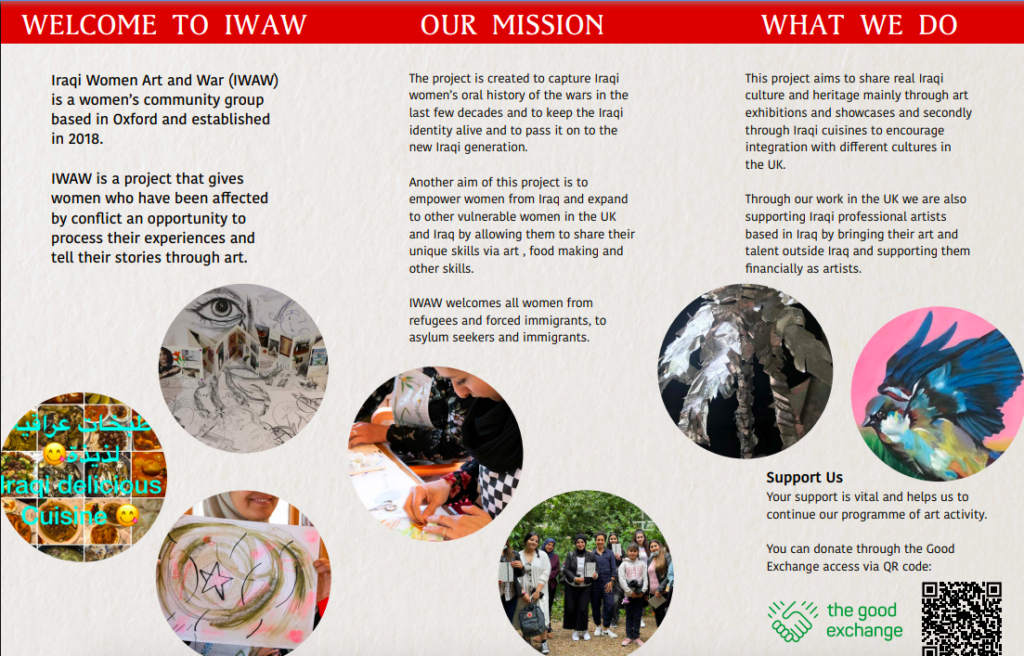Several items in our museum feature examples of ‘artivism’ – art that works as a form of activism, by advocating for marginalised groups, campaigning for rights, persuading viewers to pay attention to important issues, or working actively towards peace. Artist Rana Ibrahim – founder of the Iraqi Women, Art and War group (IWAW) – is another inspiring ‘artivist’, and the work that she and IWAW have produced has lots to teach us about ‘pockets of peace’ or ‘everyday peace’ amid conflict; about post-conflict recovery; and about the ways in which individual artworks and community art projects can bring inner peace and also nurture peace more broadly, by forging understanding and dialogue between victims of conflict and other members of society.[i]
Rana grew up in Iraq. Her childhood and early adulthood were dominated by conflict, and she ended up seeking refuge as a forced migrant in the UK following the US-led invasion of Iraq in 2003. A trained archaeologist, museum curator and artist, Rana brought those skills with her to the UK and she has since carved out a new career, bringing her experiences of conflict, her expertise in art and museum curation, and her strong commitment to community-building and peace-making together in very impactful ways. After settling in Oxford, she founded the Iraqi Women, Art and War Group, a community project that gives women who have been affected by conflict an opportunity to process their experiences and tell their stories through art. Many women in the group testify to the healing nature of this experience, and Rana herself has discussed art as a ‘safe’ space to process trauma.
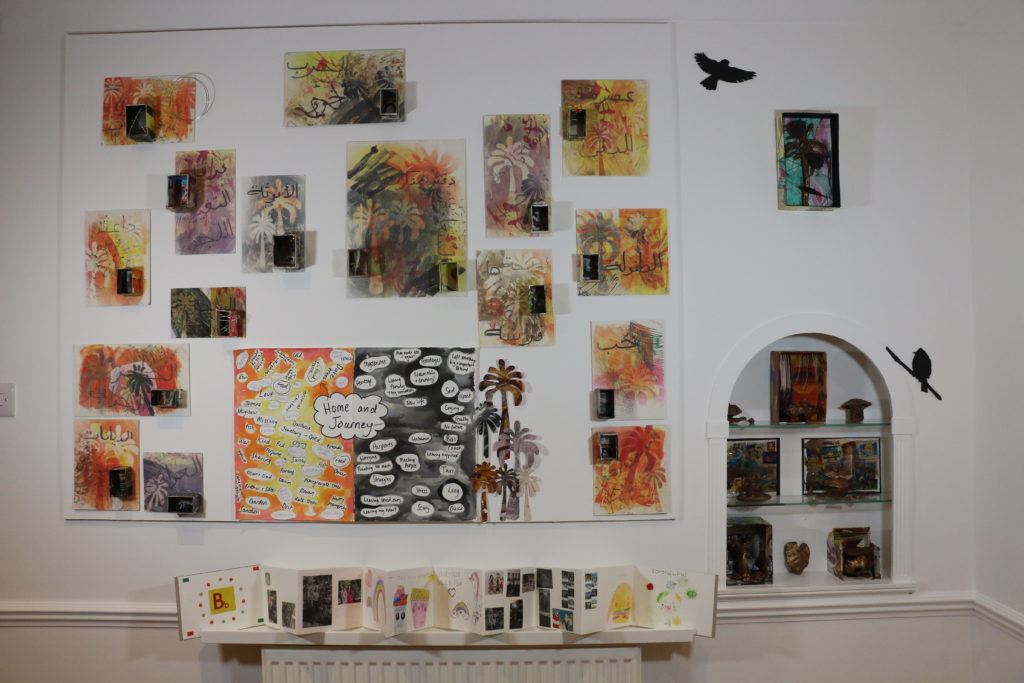
The artwork which the group has produced has been curated into an exhibition entitled ‘Of Ordinary Things’, on display at the Museum of Oxford from April to September 2022.[ii] Representations of conflict often focus on fighting, destruction, loss and death. The pieces in this exhibition are different: they aim to capture the everyday, the lives that people try to live in the shadow of conflict, and above all how women experience war. At the heart of the exhibition is a ‘Wall of Memories’. In the background to this piece are some exquisite paintings of date palms, one of the most recognisable trees in Iraq and the first thing that many Iraqi children learn to draw. The date palm represents life, sweetness, beauty and strength – and, as a feminine noun, it particularly evokes the everyday resilience of the women of Iraq.
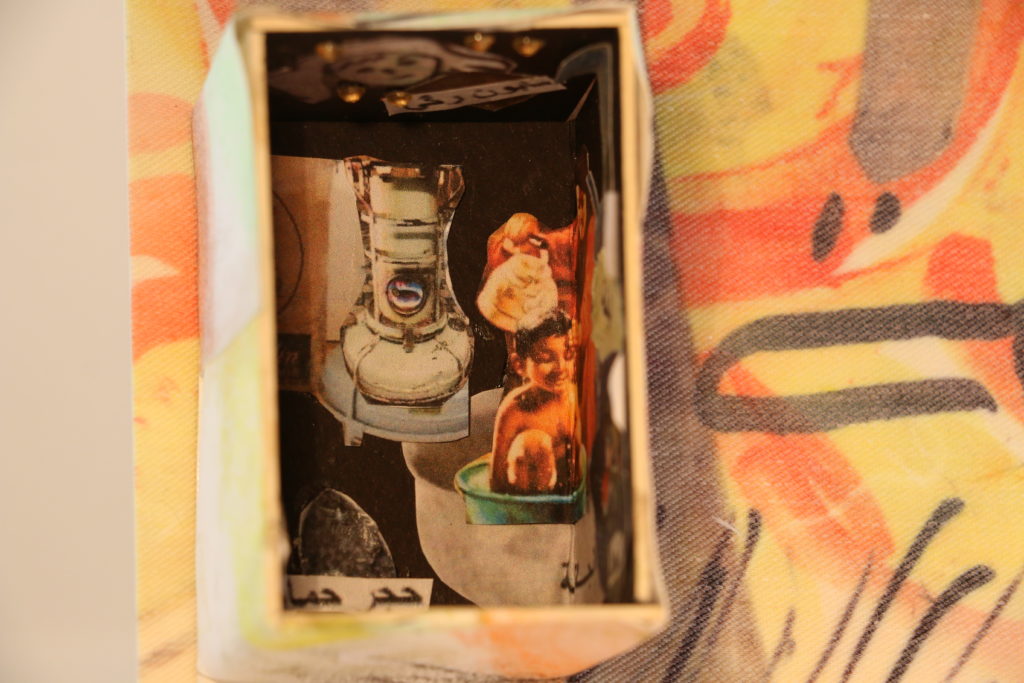
Superimposed on these date palms are lots of little ‘boxes of memories’, each containing a detailed image which evokes something of each artist’s former life in Iraq. Some boxes depict fear and loss, while others contain happier memories – such as children’s bath time in front of the stove. Taken together, the snapshots in this piece tell a much broader story about life in a war zone: they represent ordinary, everyday things, alongside macro political events, foregrounding the many different ways in which those caught up in conflict find ways to endure and even create small ‘pockets of peace’ despite the challenges.
Memory is an important theme in the exhibition. For Rana, creating art has been a way to rediscover her identity after leaving Iraq. Take for example her Map of Iraq. The map has been printed on a cloth bordered with date palms, and on it Rana has stitched words and added images to capture memories of her life in Iraq which she fears are fading after such a long time away. The piece is not finished: her hope is that other artists and exhibition visitors will add to it, sharing their own memories of Iraq and their own reflections on displacement.
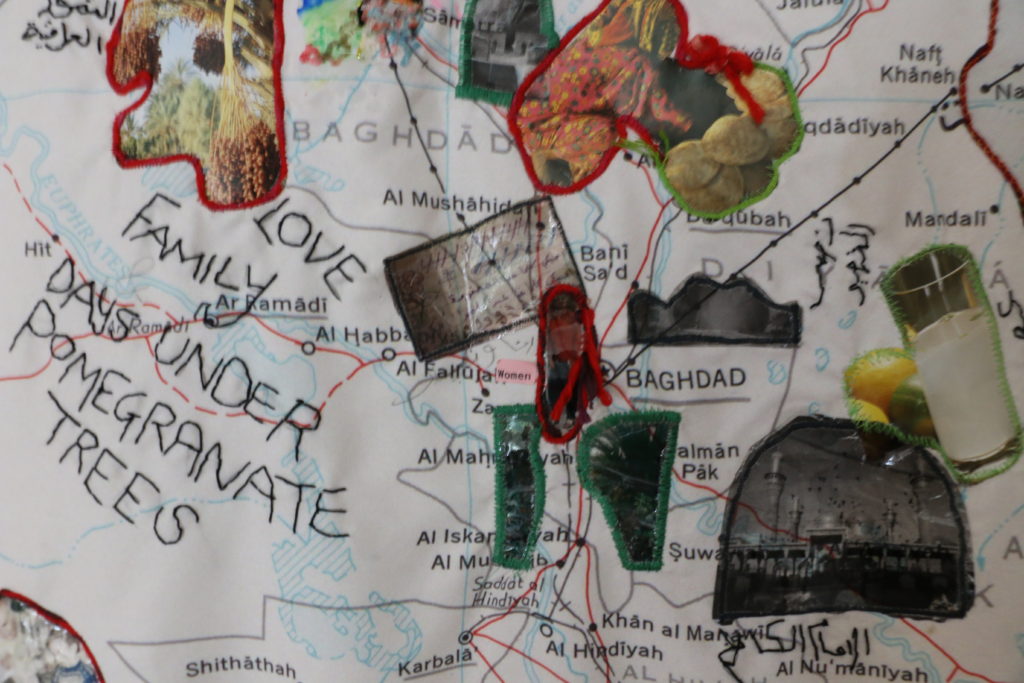
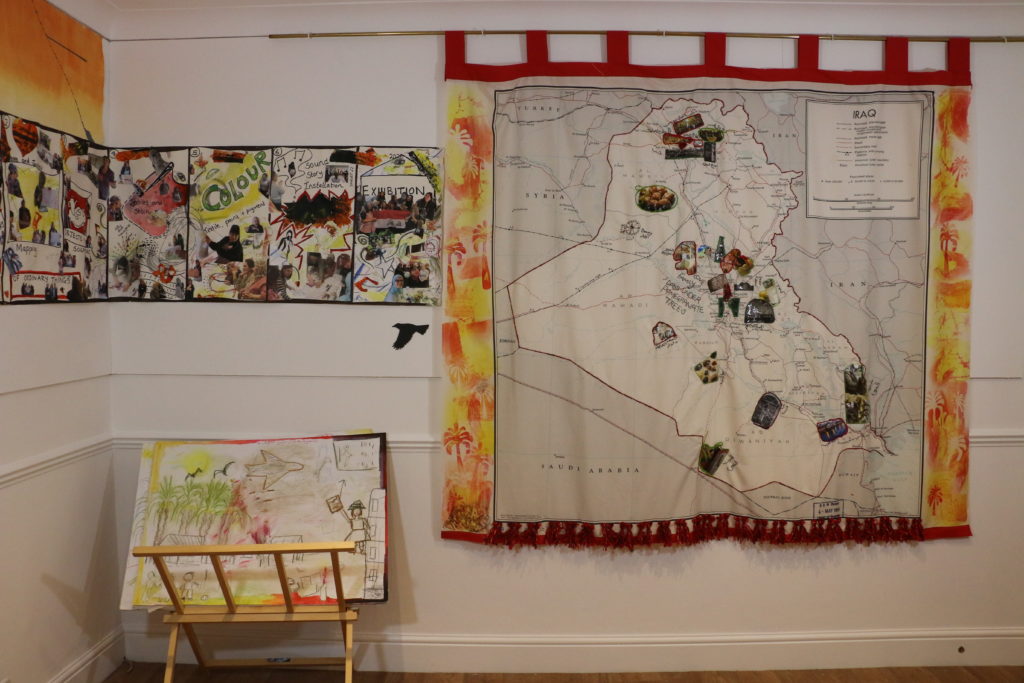
Art here functions not only to keep personal memories alive but to build community amongst displaced people. It is an act of personal recovery after conflict and displacement, but also a collective endeavour – as is the wider work of IWAW – to preserve shared memories and connect with Iraqi culture. These are fundamental aspects of peace-making: the endurance and celebration of cultural heritage is not just a sign of peace returning but a causal factor, one of the things on which sustainable peace is built.[iii] Rana hopes that her artwork will also establish dialogues with others, sparking conversations about forced displacement, what it is like to be a refugee from a war zone, what war itself is like, and why it must stop. Dialogue and the deepening of understanding across social and cultural divides are – like the preservation of culture – crucial aspects of sustainable peace-building.
Rana’s art is not simply about representation: as noted above, it is a form of activism, an act of solidarity with others who have suffered through conflict and a conscious form of storytelling that she hopes might change the world for the better. Ultimately, the art that she and her group produce is a form of peace-building, both for themselves and others. Significantly, the hashtag they are using for their exhibition is #KafiHurub’, which means ‘Stop War’ in Arabic.
What do you think?
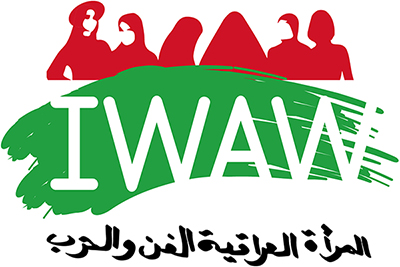
- What pockets of peace do you see in the IWAW’s exhibition ‘Of Ordinary Things’?
- What kinds of relationships do you think there are between memory, culture and peace-making?
- Can you think of other examples of collective art-marking that has promotes peace for individuals and communities? Can art change the world for the better?
If you enjoyed this item in our museum…
You might also like ‘A Blank Newspaper‘, ‘Cyber Peace and Artivism‘, ‘The Ash that Travelled‘, ‘Lament for Syria‘ and ‘Green Mosul‘.
Alice König (April 2022)
[ii] This article analyses the impact of some of Rana Ibrahim’s work with the Iraqi Women, Art and War group: https://www.middleeastmonitor.com/20220520-art-can-play-a-role-in-post-conflict-recovery/. You can learn more about it through this podcast: https://www.buzzsprout.com/1717787/8362959.
[i] You can explore the full exhibition and read some of the press releases and reviews here: https://www.iwaw19.com/iwaw-exhibition-of-ordinary-things.php.
[iii] This is well understood in Mosul, for example, where UNESCO is investing heavily in the restoration of cultural monuments. See also these reflections on the importance of cultural heritage to peace-building by Omar Mohammed, aka Mosul Eye: https://mosul-eye.org/category/heritage/ and https://mosul-eye.org/2022/03/01/a-letter-from-a-mosuli-historian-to-the-ukrainian-historians-protect-your-history-now-not-tomorrow/ and https://www.ohchr.org/sites/default/files/Documents/Issues/ESCR/CulturalHeritage/Session3/CSO/b4mohammed.pdf.
